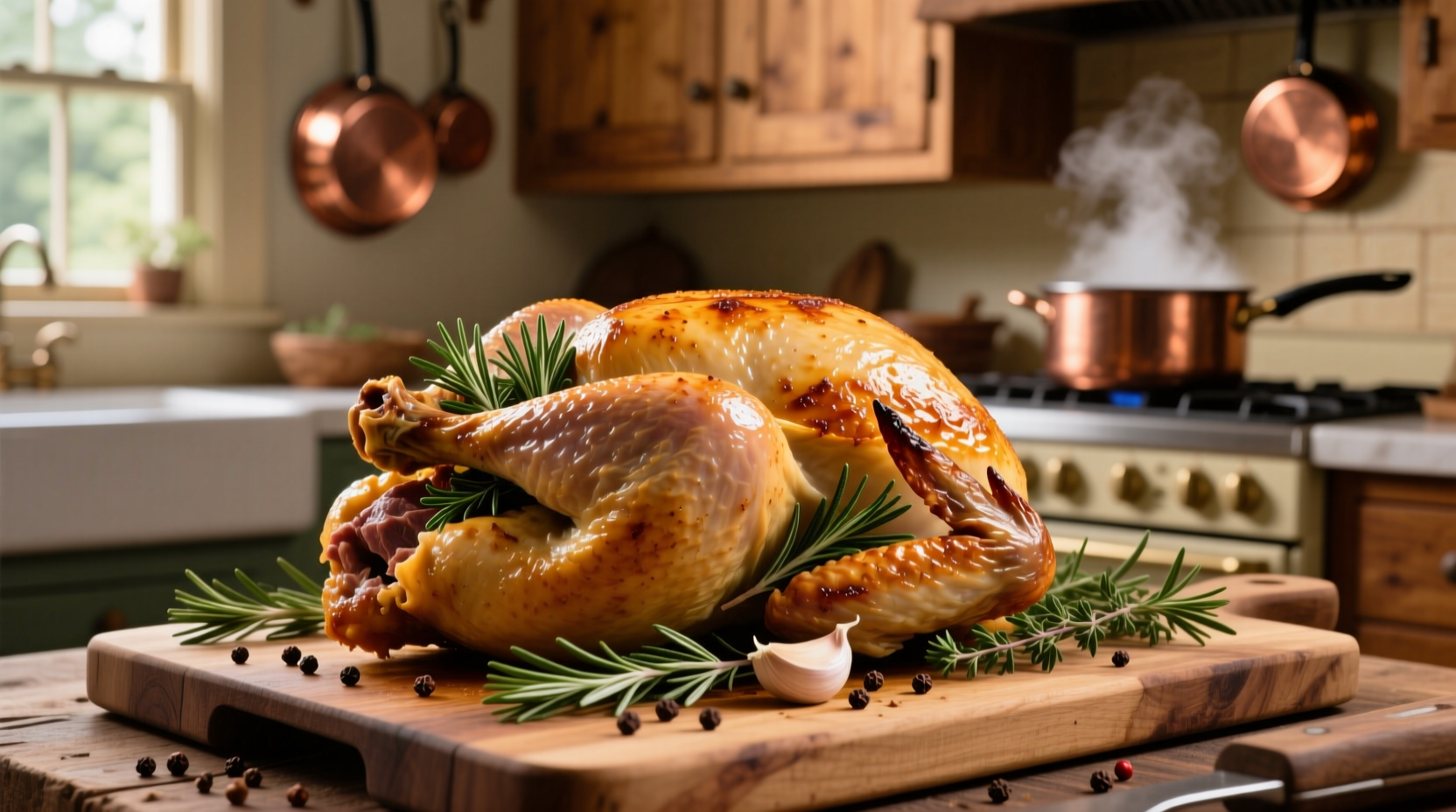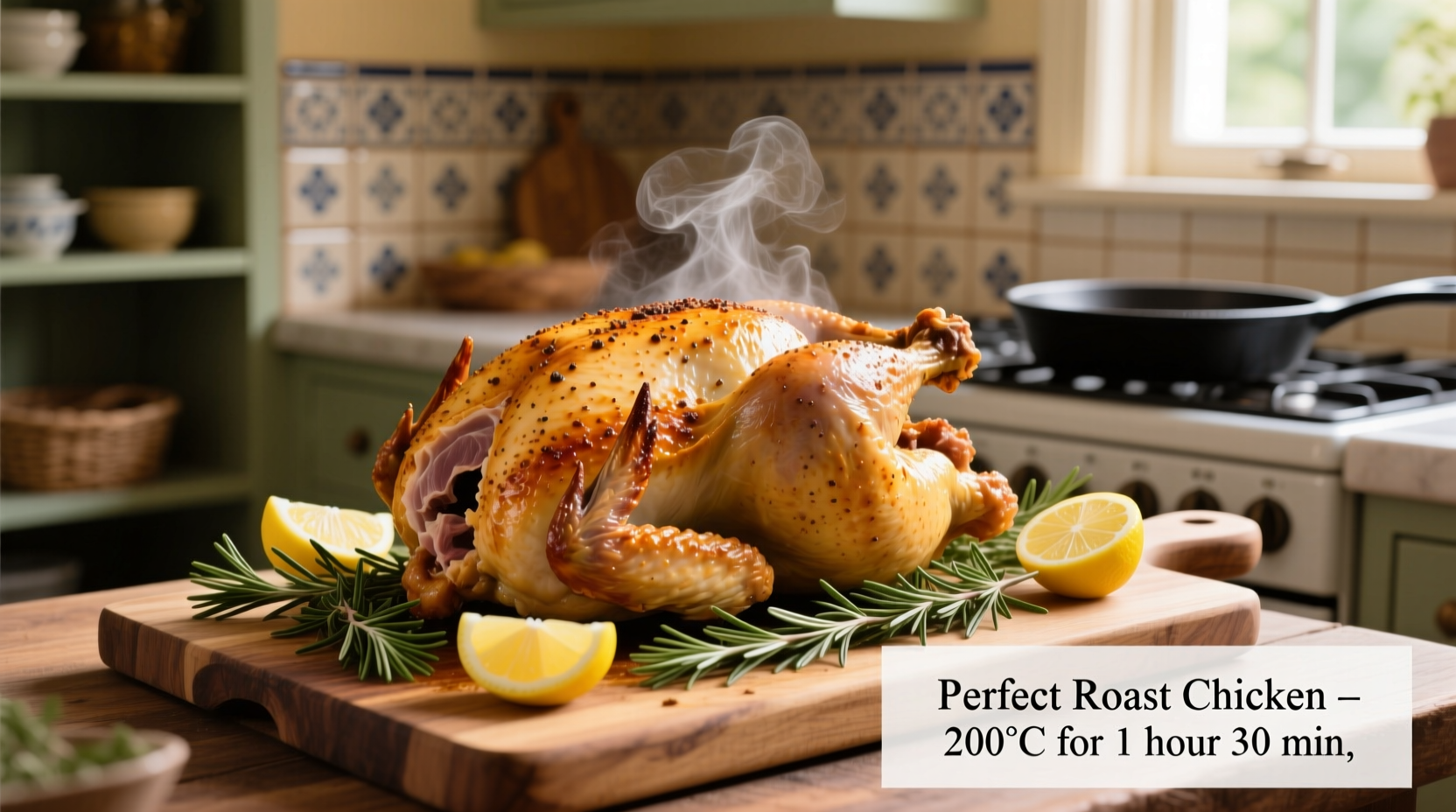Roasting a whole chicken in the oven yields juicy meat and crispy skin every time when you follow these professional techniques: Pat chicken dry, season under the skin, roast at 425°F for 15 minutes then reduce to 375°F, and check internal temperature reaches 165°F in the thickest part. This foolproof method delivers restaurant-quality results with minimal effort.
There's nothing quite as satisfying as pulling a golden-brown, perfectly roasted whole chicken from your oven. While it might seem intimidating, cooking a whole chicken is actually one of the most reliable and impressive dishes you can master in home cooking. The key to success lies in understanding temperature control, proper seasoning techniques, and knowing exactly when your chicken has reached that perfect doneness.
Why Oven-Roasted Chicken Deserves a Place in Your Repertoire
Unlike quick weeknight meals, roasting a whole chicken transforms your kitchen with aromatic scents while delivering multiple meals from a single purchase. The rendered fat bastes the meat continuously, creating unparalleled juiciness, while the high initial heat ensures crackling-crisp skin. Plus, you'll have bones for stock and leftovers for sandwiches or salads—making it one of the most economical proteins you can buy.
Essential Equipment Checklist
| Item | Why It Matters | Professional Alternative |
|---|---|---|
| Rimmed baking sheet | Prevents juices from spilling | Cast iron skillet (for better heat retention) |
| Meat thermometer | Guarantees perfect doneness (USDA recommends 165°F) | Digital probe thermometer with alarm |
| Chef's knife | For trussing and portioning | Scissors for quicker preparation |
The Step-by-Step Roasting Process
Preparation: The Foundation of Flavor (15 Minutes)
Dry brining is the chef's secret for superior results. Remove giblets, pat chicken completely dry with paper towels, then rub 1 teaspoon kosher salt per pound under the skin and over the surface. Refrigerate uncovered for at least 4 hours or up to 24 hours. This simple step seasons deeply and improves skin texture dramatically.

Roasting: Temperature Control is Everything
Preheat your oven to 425°F with rack in the center position. Place chicken breast-side up on a rack in your baking sheet. Roast for 15 minutes at high heat to kickstart browning, then reduce temperature to 375°F. Calculate cooking time as 15 minutes per pound plus 10 minutes (for example, a 4-pound chicken needs about 70 minutes total).
Critical Doneness Check
Insert an instant-read thermometer into the thickest part of the thigh without touching bone. The USDA Food Safety and Inspection Service confirms chicken is safe at 165°F internal temperature. Remove chicken from oven when it reaches 160°F—the temperature will continue rising during resting. Never skip this step; visual cues alone can't guarantee safety.
Pro Techniques for Perfect Results
Temperature Timeline Evolution
Modern oven-roasting has evolved significantly from traditional methods:
- 1950s: Standard practice was roasting at 325°F for 3+ hours, often resulting in dry meat
- 1980s: Emergence of high-heat start techniques from culinary pioneers like Julia Child
- Today: Precision temperature control with digital thermometers ensures perfect results every time
Common Challenges and Solutions
Burnt skin but undercooked meat: Tent loosely with foil during last third of cooking. Dry breast meat: Baste with pan juices every 20 minutes. Uneven cooking: Rotate pan halfway through cooking time. Remember that ovens vary—your actual cooking time may differ by 10-15 minutes from calculations.
When This Method Works Best (And When to Choose Alternatives)
This standard roasting technique shines for chickens between 3-5 pounds. For larger birds (over 5 pounds), consider spatchcocking to ensure even cooking. In high-humidity environments, extend the initial high-heat phase by 5 minutes to combat moisture retention in the skin. If you're short on time, increase the initial temperature to 450°F but monitor closely to prevent burning.
Serving and Leftover Mastery
Let chicken rest for 15 minutes before carving—this allows juices to redistribute. For clean slices, use a sharp knife and follow the natural seams. Save the carcass for homemade stock: simmer with vegetables and herbs for 2-3 hours. Leftover chicken stays fresh for 3-4 days in the refrigerator or up to 3 months frozen.











 浙公网安备
33010002000092号
浙公网安备
33010002000092号 浙B2-20120091-4
浙B2-20120091-4